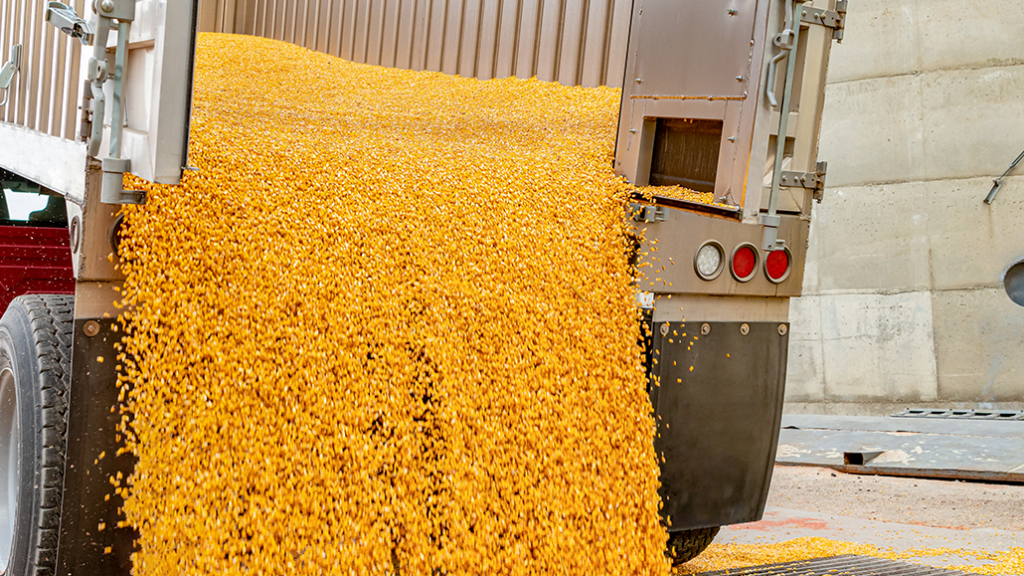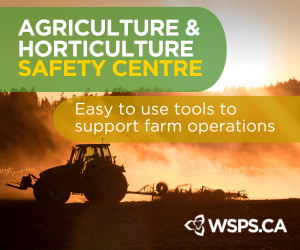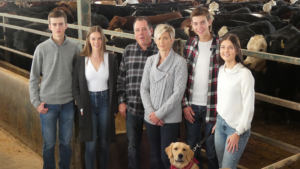Assessing grain quality
UPDATE CODE SUPPORTS TRANSPARENCY, CONSISTENCY

DURING THE BUSY harvest season, trucks line up at elevators and ports across the province to deliver Ontario-grown barley, corn, soybeans, oats, and wheat grown by Ontario’s farmers. Known domestically and internationally for supplying consistent, high-quality, abundant crops, Ontario’s reputation among millers, processors, and other end-users continues to set a high standard.
To ensure that Ontario’s crops continue to meet these high standards, in 2022, Grain Farmers of Ontario, the Ontario Canola Growers Association, and the Ontario Agri-Business Association (OABA) worked collaboratively to update the Code of Practice for trade in barley, canola, corn, oats, and wheat (identified commodities) in Ontario. The Code identifies how deliveries to country or terminal elevators will be inspected and serves as a framework for addressing disputes.
HOW THE CODE WORKS
At the point of delivery, grains are to be inspected based on the grades established under the Canada Grain Act. The Code outlines the responsibilities of the farmer and the receiving elevator and establishes a mechanism for settling any disputes that arise.
- Elevators and operators are expected to have the necessary equipment, calibration charts, and trained personnel to ensure that grading results are consistent with the standards set out by the Canada Grain Commission (CGC).
- After the grain has been inspected, the farmer can request the grade, dockage, condition, and moisture that was assigned to the load.
- At the time of delivery, elevators are to retain a sample of grain of no less than one kilogram and retain it for a period of 24 hours.
- If a farmer disagrees with the results of the grading process, the sample will be sent to the CGC or a third-party lab for analysis.
- The farmer and elevator will share the costs of forwarding the grain sample; any costs associated with testing the sample will then be the responsibility of the party found to be in error.
- The agreed-upon contract terms will prevail for any other quality concerns outside of the CGC standards, such as falling number and DON. If a dispute on these terms is initiated, a sample can be sent to a third party for assessment.
The Code is required to be posted in a visible location at receiving facilities, ensuring that all parties are aware of their responsibilities and how any disputes will be handled. The Code is also available online at www.gfo.ca/marketing.
SOYBEANS
Soybeans are not covered under the Code of Practice but rather the Agreement for Marketing of the Ontario soybean crop, which was agreed upon in 2016. The agreement allows for market forces to dictate the costs associated with cleaning and handling, drying charges, and moisture discounts and are to be agreed upon by the farmer and the dealer before delivery. Disputes can be addressed by forwarding a sample to a CGC or other third-party inspector.
The agreement can be found a www.gfo.ca/marketing.
INDUSTRY IMPACT
A year after the updated Code was established, Grain Farmers of Ontario’s manager of market development and sustainability, Dana Dickerson, says that it has provided the marketplace with a consistent, fair, and concise mechanism for ensuring that grain quality continues to meet the demands of end-users while protecting the interests of producers and grain buyers.
“We saw a need to champion a process that would ensure that any disputes were handled quickly, efficiently, and transparently,” she says. “The updated Code endorsed by our organizations provides a framework to ensure that all parties in grain Ontario transactions are are being treated fairly and respectfully.”
“Maintaining an efficient, transparent and collaborative grain marketing system is imperative to the sustainability of the industry,” she adds. “The Code is one of the mechanisms by which we can do that.”
“The Code of Practice was initially developed in the 1990s,” says Ron Campbell, OABA’s operations and member services manager. “OABA was pleased to work with Grain Farmers of Ontario and Ontario Canola Growers to update the document to better reflect current grain marketing practices. Having a consistent and transparent process for receiving grain at elevators is beneficial for the entire industry.”
OTHER QUALITY CONCERNS
Dickerson also says that it is important for producers to know that, under the Canada Grain Act, CGC-licensed elevators are prohibited from receiving or discharging grains containing any “injurious, noxious, or troublesome insect or pest.”
“This is sometimes an issue with old-crop carryover that has been stored,” says Dickerson. “To ensure deliveries are not rejected at delivery, it is important to ensure bins are clean and grain protectants are employed at harvest.”
If a grain infestation is suspected and an on-farm fumigation is required, farmer-members can contact a pest management service. •
























